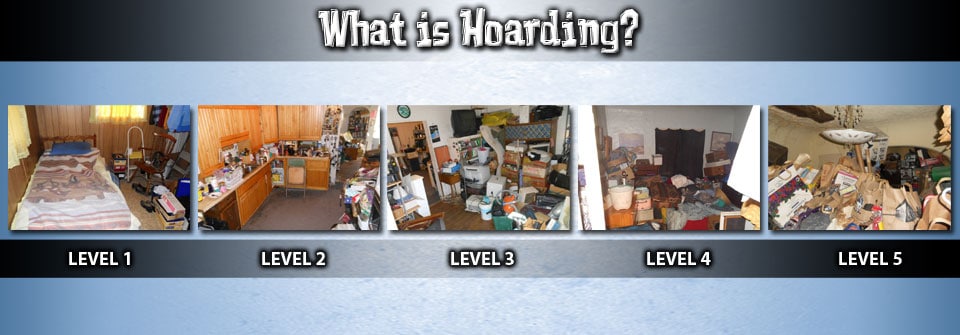Understanding the Different Classes of Hoarding: A Parent’s Guide
Welcome, caring parents! Are you concerned that clutter in your child’s room goes beyond typical disorganization? Could it be hoarding? Hoarding can be a complex and often misunderstood condition that affects individuals and families alike. In this comprehensive guide, we’ll dive deep into the classes of hoarding, helping you understand the subtle nuances and providing insights into how to best support your loved one. Let’s clear the air and create healthier homes together!
What is Hoarding?
Hoarding is a mental health disorder characterized by an individual’s consistent difficulty discarding possessions, regardless of their actual value. This behavior can lead to clutter that disrupts living spaces and negatively impacts the safety and well-being of the individual and their family. It’s important to recognize that hoarding is not simply a habit of being disorganized. It’s a complex condition that requires compassion and informed action.
Recognizing the Five Classes of Hoarding
Hoarding is not a one-size-fits-all disorder. In fact, the Institute for Challenging Disorganization (ICD) has established a Clutter-Hoarding Scale, which defines five classes of hoarding. Understanding these classes can be invaluable in determining the severity of the problem and crafting an appropriate response.
Class 1: Light Clutter and Low Level of Hoarding
The first class of hoarding is characterized by light clutter and only a small amount of excess items that do not obstruct living areas. Homes may have all doorways and staircases accessible, and health and safety are minimally compromised or not at all. While Class 1 may seem benign, it can quickly escalate if not addressed early.
Class 2: Mild Clutter and Hoarding
In Class 2, clutter becomes more noticeable. Rooms may be usable but are cluttered with excess items. There might be one major exit blocked, one major appliance not working, some evidence of neglecting housekeeping, and slight evidence of a pest or odor issue. Early intervention can prevent further progression.
Class 3: Moderate Clutter and Hoarding
This class is a turning point where the clutter starts to significantly impact the quality of life. Areas such as kitchens or bathrooms may become only partially usable. There’s a visible shift where at least two major appliances have stopped functioning for at least six months, there is visible clutter outdoors, and moderate to heavy dust. Pest activity becomes evident, and there may be areas of light structural damage that signal the need for professional help.
Continue on Your Understanding Journey
Recognizing the various classes of hoarding can be the first step toward helping a family member who is struggling. Much like the clutter that can incrementally accumulate in a hoarder’s home, knowledge and understanding build up too, offering us the tools and insights necessary to manage the situation effectively and with great empathy.
But this is just the beginning. Supporting a family member with hoarding tendencies requires a deeper dive into the strategies that aid in addressing the clutter and the emotions attached to it. Stay tuned for the continuation of this guide where we will explore the final two classes of hoarding and discuss the strategies and resources available to tackle this disorder.

Understanding the Different Classes of Hoarding: A Parent’s Guide
Welcome, caring parents! Are you worried that the clutter you’ve spotted in your dear one’s room isn’t just a case of a little messiness, but potentially something more? Thoughts of hoarding might be bubbling up, and you’re eager to get to the root of it. Buckle up as we take a thoughtful journey together to unravel the classes of hoarding. With empathy, understanding, and action, we’ll navigate through the challenges to brighter, serene spaces for our families.
5 Essential Aspects Parents Should Know About Hoarding
Before diving into the classes of hoarding, here are five cornerstone insights for every parent gearing up to face these challenges:
- Early Intervention Matters – Recognizing and addressing hoarding behavior early can make management simpler and more effective.
- Understanding Emotional Attachment – Know that for someone hoarding, items hold deep sentimental value, often reflecting fear and anxiety about letting go.
- Safety is a Priority – Hoarding can create significant safety risks, making it crucial to maintain a safe living environment for the whole family.
- Professional Help is Key – Don’t shy away from seeking the assistance of mental health professionals specializing in hoarding behaviors.
- Compassion Over Criticism – Use a gentle approach grounded in empathy, fostering trust and openness rather than defensiveness.
Keeping these insights in mind, let’s move forward to learn about the distinct classes of hoarding.
Recognizing the Five Classes of Hoarding
Every hoarding situation is unique, which is why the Institute for Challenging Disorganization has categorized hoarding into five classes. These classes help us to assess the circumstances and extent of the behavior. Let’s explore!
Class 1: Light Clutter and Low Level of Hoarding
Think of Class 1 as the budding stage of hoarding. It’s where little piles might begin forming, but they don’t interfere much with daily life. Doorways are clear, safety is generally unhampered, and it’s typically manageable without intensive intervention. However, keep a watchful eye, as this stage can evolve.
Class 2: Mild Clutter and Hoarding
In Class 2, clutter starts to make its presence felt more assertively. Imagine walking into a room and noticing things are starting to pile up, perhaps one path is blocked, or an essential appliance isn’t being used because it’s buried under the clutter. Housekeeping may fall by the wayside, and there could be a faint trace of unwanted odors or pests. It’s a signal to gently step in and offer help.
Class 3: Moderate Clutter and Hoarding
Here’s where the clutter begins to take over significant parts of the living space. You might see crucial areas like kitchens or bathrooms losing their functionality, with appliances sitting idle for months. Dust could be everywhere, along with more noticeable signs of pests. It’s a clear indication that professional help might be required to address safety and health risks.
Let’s Keep Going!
Understanding each class of hoarding is a strong leap forward in assisting a family member. Just as clutter collects piece by piece, our knowledge too accumulates, empowering us to approach the issue with sensitivity and dexterity. This learning path is ongoing, and we’ve got more ground to cover with the remaining classes and actionable strategies to confront hoarding behaviors.
Ready for more? Next, we’ll delve into the more severe classes of hoarding, the impact on families, and the available support systems to bring about genuine change. Keep this conversation going; continue learning, and take proactive steps to support and heal together.
See more great Things to Do with Kids in New Zealand here. For more information see here
Disclaimer
The articles available via our website provide general information only and we strongly urge readers to exercise caution and conduct their own thorough research and fact-checking. The information presented should not be taken as absolute truth, and, to the maximum extent permitted by law, we will not be held liable for any inaccuracies or errors in the content. It is essential for individuals to independently verify and validate the information before making any decisions or taking any actions based on the articles.




